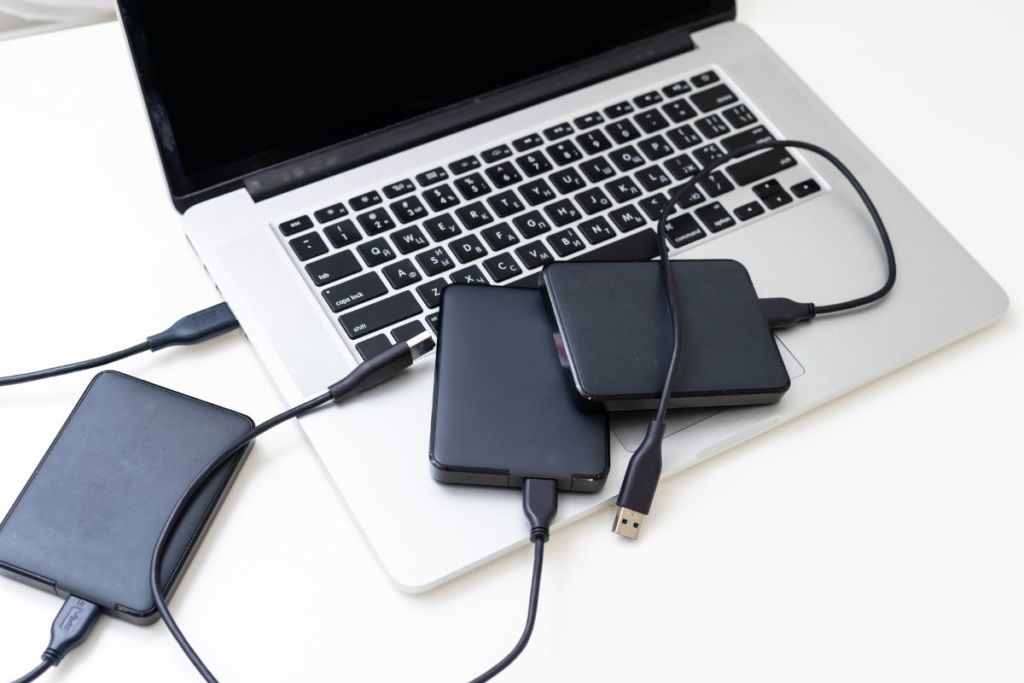Today’s businesses live and breathe data. From employee records and client files to financial documents and proprietary software, your organization’s digital footprint is growing every day. But what happens when that data is no longer needed?
If your end-of-life devices aren’t being properly destroyed, your business may be exposed to serious risks—including fines, data breaches, and failed audits.
That’s why secure, on-site hard drive and media destruction is a vital part of any data protection plan. It’s not only a best practice—it’s a requirement under Canadian privacy law and many global compliance frameworks.
This guide explains why on-site destruction matters, what laws and standards require, how the process works, and how your business can stay compliant and audit-ready.
The Hidden Risk in Old Devices
Many businesses understand the importance of data security while devices are active—but fail to consider what happens after a device is retired. When that old hard drive, USB, or backup tape leaves your hands without being physically destroyed, your data could still be accessed.
Common misconceptions:
- “We wiped the drive—it’s fine.”
Most wiping software only overwrites part of the data. Data recovery tools—even free ones—can retrieve sensitive files unless the drive is physically destroyed. - “The vendor said they recycled it.”
Without documentation or witnessing the destruction, there’s no way to confirm whether the data was securely handled. - “We’re a small company—it doesn’t apply to us.”
Privacy laws like PIPEDA apply to all businesses that handle personal information, regardless of size.
What Canadian Law Requires: PIPEDA and Beyond
Under the Personal Information Protection and Electronic Documents Act (PIPEDA), Canadian businesses are responsible for securely disposing of personal information. That includes ensuring electronic records are rendered irretrievable.
PIPEDA Section 4.5.3: “Personal information that is no longer required to fulfill the identified purposes should be destroyed, erased, or made anonymous.”

- HIPAA – for healthcare-related data (U.S. or cross-border)
- PCI DSS – for payment card data
- NIST 800-88 – widely followed data sanitization guidelines, especially in IT and government
- FIPPA/MFIPPA – if you are a public sector organization in Ontario
All of these frameworks recommend or require physical destruction of media that won’t be reused.
The Business Case: Why Secure Media Destruction Matters
Improper disposal of media can lead to a cascade of consequences:
| Risk | Impact |
|---|---|
| Data breach | Sensitive data retrieved from old devices |
| Legal penalties | Fines under PIPEDA, HIPAA, or contractual agreements |
| Audit failure | Lack of destruction logs or certificates |
| Reputational damage | Public trust lost due to security incident |
| Operational disruption | Compliance investigations or lawsuits |
And it’s not just hypothetical. Real-world cases show how organizations—large and small—can be compromised due to simple oversights in device disposal.
Why On-Site Destruction Is the Gold Standard
When it comes to destroying electronic media, you typically have two options:
- Off-site destruction – Items are picked up and destroyed elsewhere
- On-site destruction – Media is destroyed immediately at your location
Blue-Pencil offers on-site destruction only—and here’s why that matters:
On-Site = Maximum Control and Security
- You witness the process from start to finish.
- No risk of transit loss or theft.
- No opportunity for media to be misplaced or accessed.
With Blue-Pencil’s on-site service, our mobile shred truck arrives at your location and destroys your hard drives and devices on the spot. You receive a Certificate of Destruction immediately, with all required compliance details, including serial numbers and timestamps.
What to Destroy: It’s More Than Just Computers
Modern data lives in more places than many businesses realize. Here’s a checklist of devices that should be destroyed when decommissioned:
✅ Traditional hard drives (HDDs)
✅ Solid-state drives (SSDs)
✅ USB flash drives
✅ Backup tapes (LTO, DLT, DAT)
✅ CDs, DVDs, Blu-ray discs
✅ Smartphones and tablets
✅ Network equipment with memory (e.g., routers, switches)
✅ Printers, copiers, and scanners with internal memory
If it has a chip or stores data—it should be securely destroyed.
How Blue-Pencil’s On-Site Service Works
Here’s what to expect when you schedule a destruction visit:
1. Book your appointment.
You choose the available day that works best for your team.
2. We arrive at your location.
A trained, background-checked technician comes with a mobile shredding truck.
3. Devices are scanned and logged.
Serial numbers are recorded for chain-of-custody documentation.
4. You witness the destruction.
Drives and devices are shredded in real-time at your site.
5. Receive your certificate.
You’re provided with a Certificate of Destruction for your compliance records, including date, method, and details of destroyed media.
6. We recycle the debris.
Shredded material is sent to certified e-waste facilities for environmentally responsible recycling.
FAQs: Common Questions from Clients
Q: Can I just remove and destroy the hard drive myself?
A: Physically destroying drives with DIY methods (e.g., drills or hammers) is not only unsafe but also unlikely to meet compliance standards. Certified shredding is the gold standard.
Q: How long should I keep hard drives before destroying them?
A: Follow your data retention policy and legal requirements, but don’t keep retired media longer than necessary. If it’s not in use, it’s a liability.
Q: Is this service suitable for remote offices or satellite teams?
A: Yes! Blue-Pencil offers mobile on-site service across Southern Ontario. We can coordinate multi-site pickups.
Why Organizations Trust Blue-Pencil
Blue-Pencil is a locally owned, Canadian company with over 20 years of experience in secure information management. We’re trusted by thousands of businesses across Ontario—from healthcare clinics and law firms to school boards, retailers, and government offices.
What sets us apart:
- Certified, on-site hard drive and media destruction
- Fully trained, bonded, and background-checked staff
- Transparent pricing and no hidden fees
- Compliance with regulations
- Fast turnaround and flexible scheduling
- Environmentally responsible solutions
Final Thoughts: Compliance Is a Process, Not a Project
Staying compliant doesn’t happen by accident. It takes consistent action, clear policies, and reliable partners. Proper hard drive and media destruction is one of the simplest ways to avoid data exposure and demonstrate good governance.
With Blue-Pencil’s on-site destruction service, you don’t just destroy data—you gain peace of mind, meet legal standards, and prove your commitment to information security.
Ready to Stay Compliant?
Let’s help you protect your data, your business, and your reputation.


